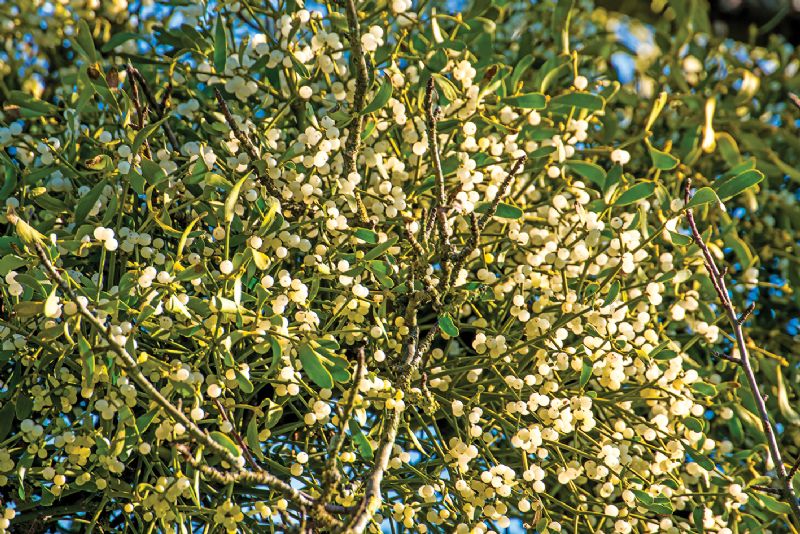- Home
- News, Articles & Reviews
We are hiring! Please click here to join our growing magazine delivery team in Gloucestershire!
Areas
Pets & Wildlife
Archive

Mythical mistletoe
All Areas > Pets & Wildlife > Wildlife Matters
Author: Dorothy Glen, Posted: Wednesday, 23rd November 2022, 09:00
An iconic sight at this time of year, mistletoe is common throughout Gloucestershire. In fact, it thrives in this part of England and is sparse elsewhere.
Personally, having moved here from the east of England, it still feels unusual to me and I enjoy seeing trees laden with the distinctive leafy masses that I used to think of as rare.
It grows mainly on apple trees, poplars, limes and hawthorns, and is hemiparasitic, meaning it takes water and nutrients from its host, but still photosynthesises with its own leaves.
It has been spreading across the UK
With mistletoe comes mistle thrushes, which favour the berries, and excrete the seeds. Some seeds fall back onto the branches where they may grow into new plants. In recent years, though, mistletoe has been spreading more widely across the UK. This is thought to be due to black caps; migrant birds which are increasingly found here over the winter, as well as the warmer months.
Black caps eat the berry flesh and wipe the seeds directly onto branches, efficiently transferring the plants to new locations. Mistletoe may be one of the species which benefits from our increasingly milder winters, as the black caps increase in number.
A long history of legend and folklore
But why do we kiss under it? Mistletoe has a long history of myth, legend and folklore. For the Druids, mistletoe represented vitality, as it grew green and lush in the winter on trees which had lost their own leaves.
The Romans hung mistletoe in their doorways for protection, believing it to represent peace and love. These, and the connection made in several cultures between the sticky white juice from the berries and male fertility, has led to the kissing-under-the-mistletoe tradition we know today.
In perhaps its most epic role, mistletoe also features in Norse mythology. The god Baldr was the most beautiful and favourite son of Odin and Frigg. His mother made all things in existence swear never to hurt Baldr, and the gods passed the time enjoying throwing weapons at him and seeing them fail.
An epic role in Norse mythology
The mischief maker, Loki, discovered that mistletoe, being too young to be considered a threat, had not made the vow. Loki went next to Hod, Baldr’s blind brother, and suggested Hod must feel left out of the festivities as he was unable to aim and throw.
Loki passed him a spear made of mistletoe, and helped him throw it at Baldr, killing him. In some versions, Frigg’s tears became the berries, and the gods made mistletoe promise it would only commit acts of happiness or usefulness for evermore.
Whether you believe the folklore or not, kissing under the mistletoe is a tradition that will likely continue for many years. Merry Christmas!Other Images
Copyright © 2025 The Local Answer Limited.
Unauthorized use and/or duplication of this material without express and written permission from this site's author and/or owner is strictly prohibited. Excerpts and links may be used, provided that full and clear credit is given to The Local Answer Limited and thelocalanswer.co.uk with appropriate and specific direction to the original content.More articles you may be interested in...


© 2025 The Local Answer Limited - Registered in England and Wales - Company No. 06929408
Unit H, Churchill Industrial Estate, Churchill Road, Leckhampton, Cheltenham, GL53 7EG - VAT Registration No. 975613000You are leaving the TLA website...
You are now leaving the TLA website and are going to a website that is not operated by us. The Local Answer are not responsible for the content or availability of linked sites, and cannot accept liability if the linked site has been compromised and contains unsuitable images or other content. If you wish to proceed, please click the "Continue" button below:




